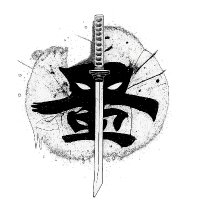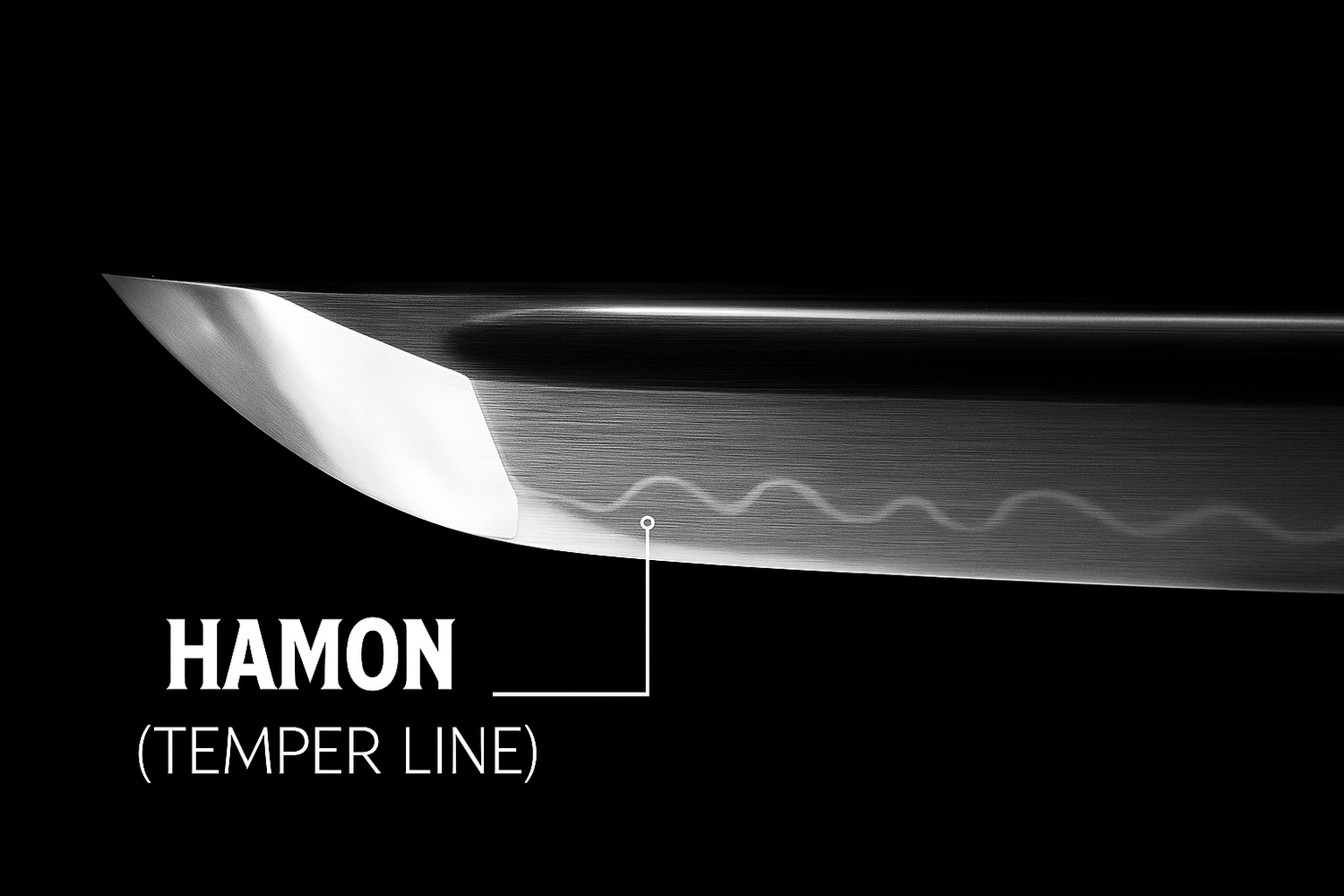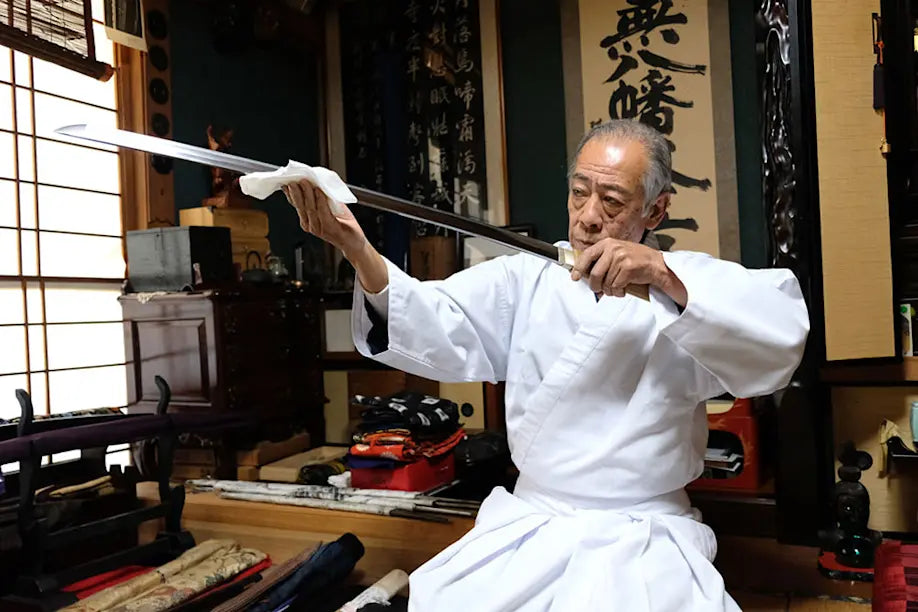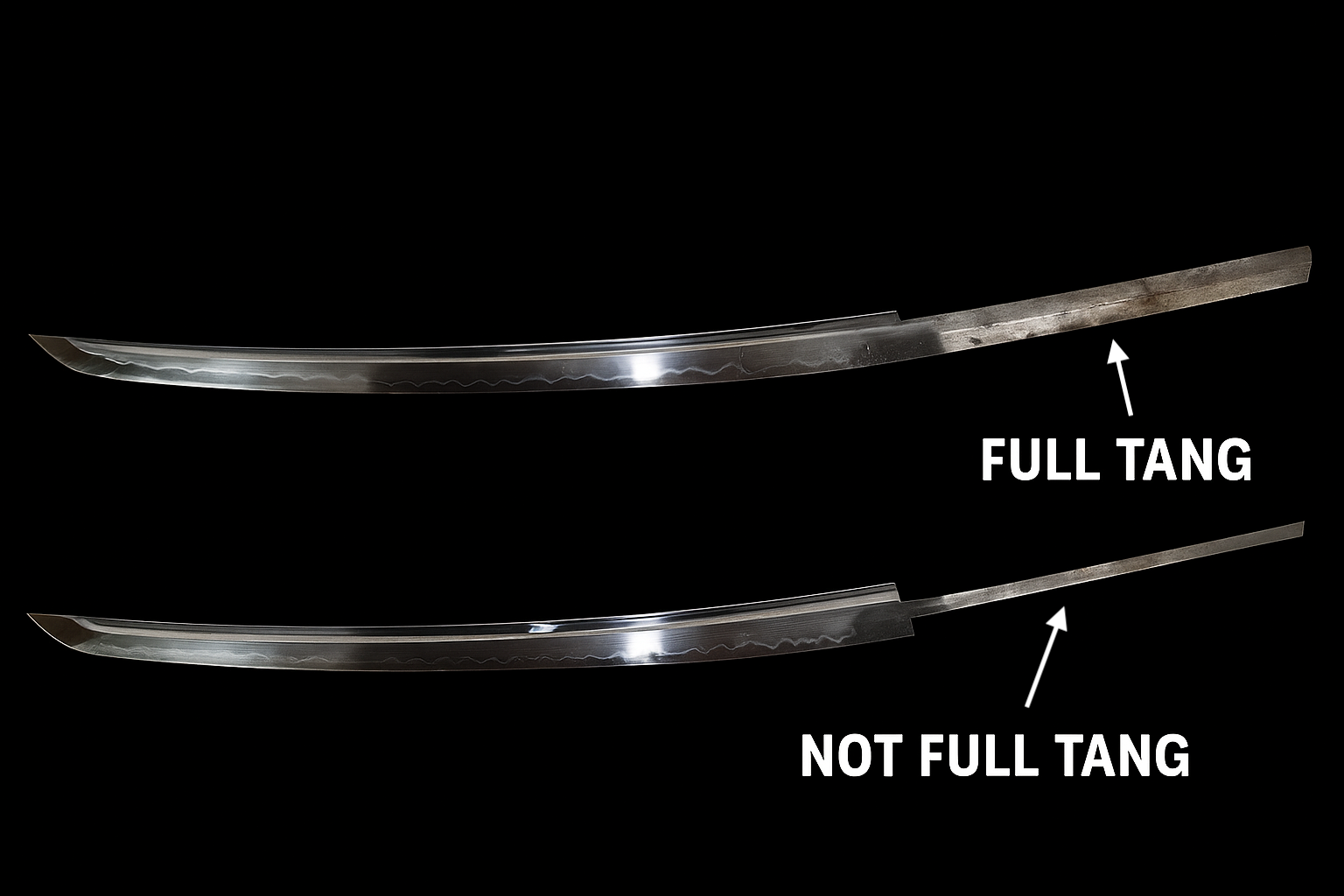When looking at a katana, you will sometimes see a wavy or linear marking along the edge of the blade, this is the hamon. But this is not just a decorative detail. The hamon is the result of a special hardening process that both gives the sword its strength and becomes a signature of the swordsmith.
Origin and function
Traditionally, hamon are created through a method called differential hardening. The blacksmith coats different parts of the blade with clay, a thicker layer on the back (mune) and a thinner layer along the edge (ha). When the blade is then heated and cooled rapidly (quenching), the edge hardens and becomes extremely hard, while the back remains more flexible. This gives the katana its unique combination of sharpness and impact resistance, a sharp blade that does not crack under pressure.
The hamon line is thus the visible boundary between these two steel properties. It can take many different forms, wavy ( notare ), flamed (choji), straight ( suguha ), and over time became a way for blacksmiths to show off their skill.
Hamon in modern katanas
Traditional hamon are created through advanced heat treatment and clay application, which requires a great deal of experience. In our modern katanas we use T10 carbon steel that has been hardened with clay in the traditional way to create a genuine hamon, not just etched with acid like cheaper replicas. This means that each blade has its own unique, functional line, shaped by the hand of the smith.
Symbolism and beauty
For many collectors and enthusiasts, the hamon is not just a sign of function, it is a work of art. The light that dances across the line as the blade moves brings the sword to life. It tells the story of the process, the intention of the smith, and the soul of the blade.



